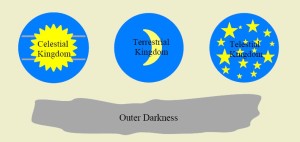Related Posts: Blacks and the Priesthood; Race issues in the Book of Mormon: Part I; Race issues in the Book of Mormon: Part II
Summary: On the McLaughlin Group Lawrence O’Donnell ranted against Mormonism. He said the LDS faith is racist and Joseph Smith was a criminal. He also accused the Church of being pro-slavery. His views are extremely biased–that will be obvious to anyone who watches the clip below.
So, was Mormonism ever pro-slavery?
The LDS faith was never pro-slavery. Neither were Joseph Smith and Brigham Young–the only LDS Presidents during the antebellum period. Joseph Smith wanted to free the slaves by purchasing their freedom. Brigham Young said, “I am neither an abolitionist nor a pro-slavery man.” He goes on to say if he had to choose he would be against the pro-slavery side.
Brigham Young wanted Utah to be a free state, but as a territory it permitted slavery. Though there were probably never more than 100 slaves in the entire territory.
Naturally, politics came into play. When the church was in Missouri it was accused of being abolitionist, which is something Joseph Smith had to deal with. Brigham Young was afraid if slavery were abolished polygamy would be next. So they both walked a political tightrope.
Their positions on slavery are not what we would like them to be. But I cannot conclude either of them were pro-slavery. Continue reading “Was Mormonism Ever Pro-slavery?”

